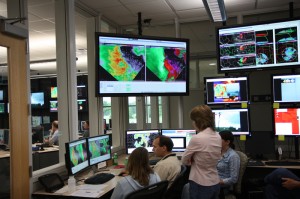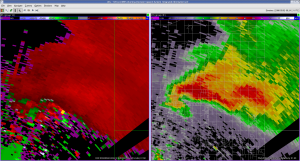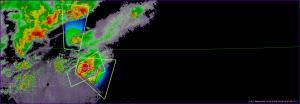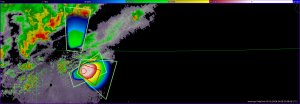Given the dearth of severe weather today, we went ahead and had all the participants (Dan M. Dan P. Dave H., Eve G. and Ron P.) sit through the briefings for each project (CASA, PAR and PROBWARN) after the orientation.
This evening, Dan P. and Dave H. are running though a CASA case with Brenda and Ellen. Dan M. and Ron P. are working a PAR case with Greg S. and Arthur.
Greg has offered a few comments regarding the PAR playback case(s), in general. He notes that the incoming data may be arriving too quickly, effectively bogging down the display when viewing cross sections. [Note: this is something that I encountered trying to run/view the PAR in realtime over the past year or two.] We can certainly take care of this in the w2simulator, but Greg ponders whether this should be done for realtime viewing.
EDIT (by Greg): Since the PAR already updates so rapidly, we could consider updating a volume scan at a time. This would provide ~60s updates of all tilts at once, and only “lock up” the display one time per minutes, rather than every 5s which is the current wg polling interval.
Comments by Ron and Dan (as well as Greg and Arthur) suggest that getting 88D data (KTLX, KFDR, etc.) for the PAR playback cases would be very helpful.
Kevin Manross (EWP Weekly Coordinator, 12-16 May)





